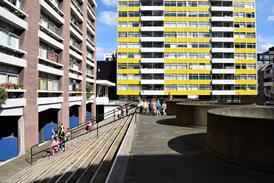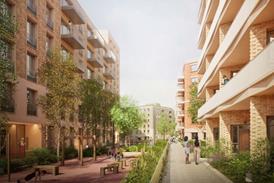- Home
- Intelligence for Architects
- Subscribe
- Jobs
- Events

2025 events calendar Explore now 
Keep up to date
Find out more
- Programmes
- CPD
- More from navigation items
How to save historic buildings in the real world

As Historic England calls for more of our heritage to be repurposed, Richard Griffiths on the social value and economics of reusing old buildings
I have been fortunate in my career to have been able to give new life to many old buildings, and to witness how they have become the focus for the regeneration of run-down inner-urban areas. But their physical transformation, however striking, is less spectacular than the social transformation they can bring for the benefit of the public.
The sustained emotive power of old buildings has been most powerfully expressed by Ruskin, who wrote of old buildings that, “They are not ours. They belong partly to those who built them and partly to all the generations of mankind who are to follow us.” We may not agree with Ruskin’s ideas of the sanctity of heritage, but we can all agree how the buildings that form our local environment shape our sense of place and our sense of identity. However, such feelings remain hidden, or latent, until there is a threat to their future or to their survival.
I witnessed this at Sutton House in Hackney when an extraordinary committed group of local people came together from the local community to save the house from conversion by the National Trust to private apartments, convinced that the house could serve a far richer social purpose. The house has been converted to include a café, a barn for performance and functions, and a gallery for temporary exhibitions.
…
This is premium content.
Only logged in subscribers have access to it.
Login or SUBSCRIBE to view this story

Existing subscriber? LOGIN
A subscription to Building Design will provide:
- Unlimited architecture news from around the UK
- Reviews of the latest buildings from all corners of the world
- Full access to all our online archives
- PLUS you will receive a digital copy of WA100 worth over £45.
Subscribe now for unlimited access.
Alternatively REGISTER for free access on selected stories and sign up for email alerts






